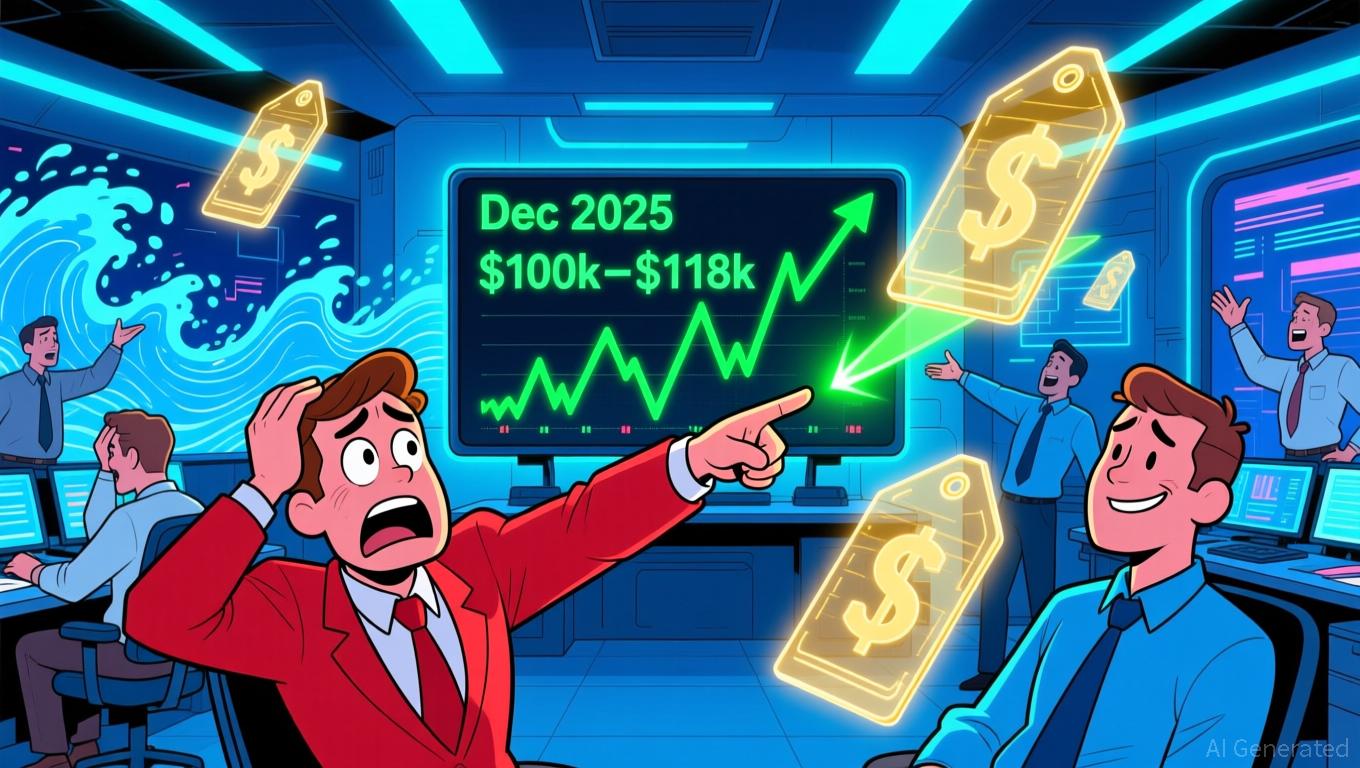Zcash (ZEC) Price Rally: Is a Revival of Privacy Coins Possible in 2025?
- Zcash (ZEC) surged 472% to $420 in 2025, driven by regulatory clarity and institutional adoption under U.S. Clarity/Genius Acts. - Grayscale's $137M ZCSH investment and 30% Q4 shielded supply growth highlight Zcash's privacy-flexibility appeal over Monero. - Electric Coin Co.'s Orchard protocol and Winklevoss's 1.25% ZEC acquisition reinforce Zcash's position as top privacy coin ($7B market cap). - Critics warn of Bitcoin competition risks and hype claims, while Zcash's sustainability hinges on balancing
Regulatory Clarity: Fueling Institutional Interest
The introduction of the U.S. Clarity Act and Genius Act at the end of 2025 marked a significant milestone for privacy coins. These laws created a legal structure that enables projects like Zcash to comply with anti-money laundering (AML) rules while retaining essential privacy protections
Zcash’s model, which lets users choose between private and public transactions, has been especially attractive. In contrast to Monero’s default privacy, Zcash’s approach meets institutional requirements for transparency and auditing. This flexibility is evident in Grayscale’s $137 million allocation to
On-Chain Metrics: Signs of Renewed Momentum
Recent on-chain data for Zcash points to its resurgence. In the last quarter of 2025, the number of shielded tokens exceeded 4.1 million, with
Electric Coin Co. (ECC), the team behind Zcash, has reinforced the project’s direction with a Q4 2025 roadmap that emphasizes user experience and scalability. Notable plans include temporary addresses for private swaps, improved hardware wallet support, and new multisig features for the Zashi wallet
Institutional Influence and Market Shifts
The Winklevoss twins have further boosted Zcash’s profile among institutions. Their company, Cypherpunk Technologies (previously Leap Therapeutics), acquired 1.25% of the total ZEC supply, positioning Zcash as a complement to
Zcash’s market value,
Sustainability and Future Prospects
Zcash’s continued rally depends on two main factors: ongoing regulatory support and successful technological improvements. While the Clarity and Genius Acts have provided a temporary boost, future policy changes could bring new challenges. For now, Zcash’s selective transparency offers a model for regulatory cooperation, but its future will depend on maintaining this careful balance.
On the technical side, ECC’s roadmap targets major issues like wallet usability and network scalability. The effectiveness of these solutions will ultimately rely on user uptake and institutional adoption. If Zcash can prove that privacy and regulatory compliance can go hand in hand, it could secure a lasting role in the digital asset space.
Conclusion: Lasting Privacy Revival or Short-Lived Trend?
Zcash’s surge in 2025 signals a broader market shift toward privacy-driven assets. Clearer regulations, institutional backing, and increased on-chain activity all indicate renewed enthusiasm for privacy coins. However, obstacles remain. The project must contend with regulatory uncertainties, skepticism from Bitcoin advocates, and the challenge of proving its innovations have practical value.
For investors, Zcash presents both significant potential and inherent risk. Its recent price movement suggests privacy is becoming a central concern in the financial world. Whether this resurgence leads to a lasting revival for privacy coins will depend on Zcash’s ability to adapt to regulatory changes, user expectations, and the broader crypto landscape.
Disclaimer: The content of this article solely reflects the author's opinion and does not represent the platform in any capacity. This article is not intended to serve as a reference for making investment decisions.
You may also like
USDe's total value locked drops by 50% even as onchain activity remains strong, highlighting the vulnerability of DeFi yields
- Ethena's USDe stablecoin TVL fell 50% to $7.6B amid yield compression and unwinding leveraged carry trades, despite rising onchain transaction volume. - The synthetic stablecoin's 5.1% APY now lags Aave's 5.4% USDC borrowing rates, triggering outflows as leverage strategies become unprofitable. - Collapsing 10x leverage loops and maturing perpetual tokens accelerated TVL decline, exposing fragility of yield-bearing stablecoins in risk-off markets. - Chaos Labs recommends lowering Aave V3 stablecoin borro
Klarna's CEO Turns Crypto Skepticism into a Stablecoin Innovation
- Klarna , a Swedish fintech , launches KlarnaUSD, its first stablecoin, after CEO Sebastian Siemiatkowski previously dismissed crypto as impractical. - Pegged to the U.S. dollar, the stablecoin uses Stripe's Open Issuance platform and Tempo blockchain, with a 2026 public launch planned. - Aimed at cutting $120 billion in annual cross-border payment fees, it targets 114 million users and $112 billion in GMV, aligning with a $27 trillion stablecoin market surge. - The move deepens Klarna's partnership with

Bitcoin News Today: Bitcoin’s $13.3B Options Expiration Depends on 15% Surge to Protect Major Positions
- Bitcoin (BTC-USD) fell 30% from its $126,000 peak to $87,080 amid ETF outflows, stablecoin liquidity declines, and leverage unwinds. - A $13.3B options expiry on Dec 26, 2025, features a $1.74B call condor bet targeting $100,000–$118,000, with profits capped at $112,000. - November saw $3.5B in Bitcoin ETF outflows, while stablecoin market cap dropped $4.6B, signaling heightened liquidity risks. - Market stability signs include a 32 RSI near oversold levels and reduced downside protection costs, though s

Bitcoin Updates Today: Bitcoin's Volatility: Surrender or Endurance from Institutions?
- Bitcoin's recent price drop and negative funding rates suggest market capitulation, with open interest collapsing 32% since late October 2025. - Institutional holdings like KindlyMD's $681M BTC stash and Harvard's ETF investments highlight growing long-term confidence in Bitcoin's stability. - Q3 2025 crypto VC surged 290% to $4.65B, while experts diverge: Standard Chartered targets $200K BTC by year-end, Kraken predicts $80K–$100K consolidation. - Macro risks including Japan's reserve rules and AI-drive
